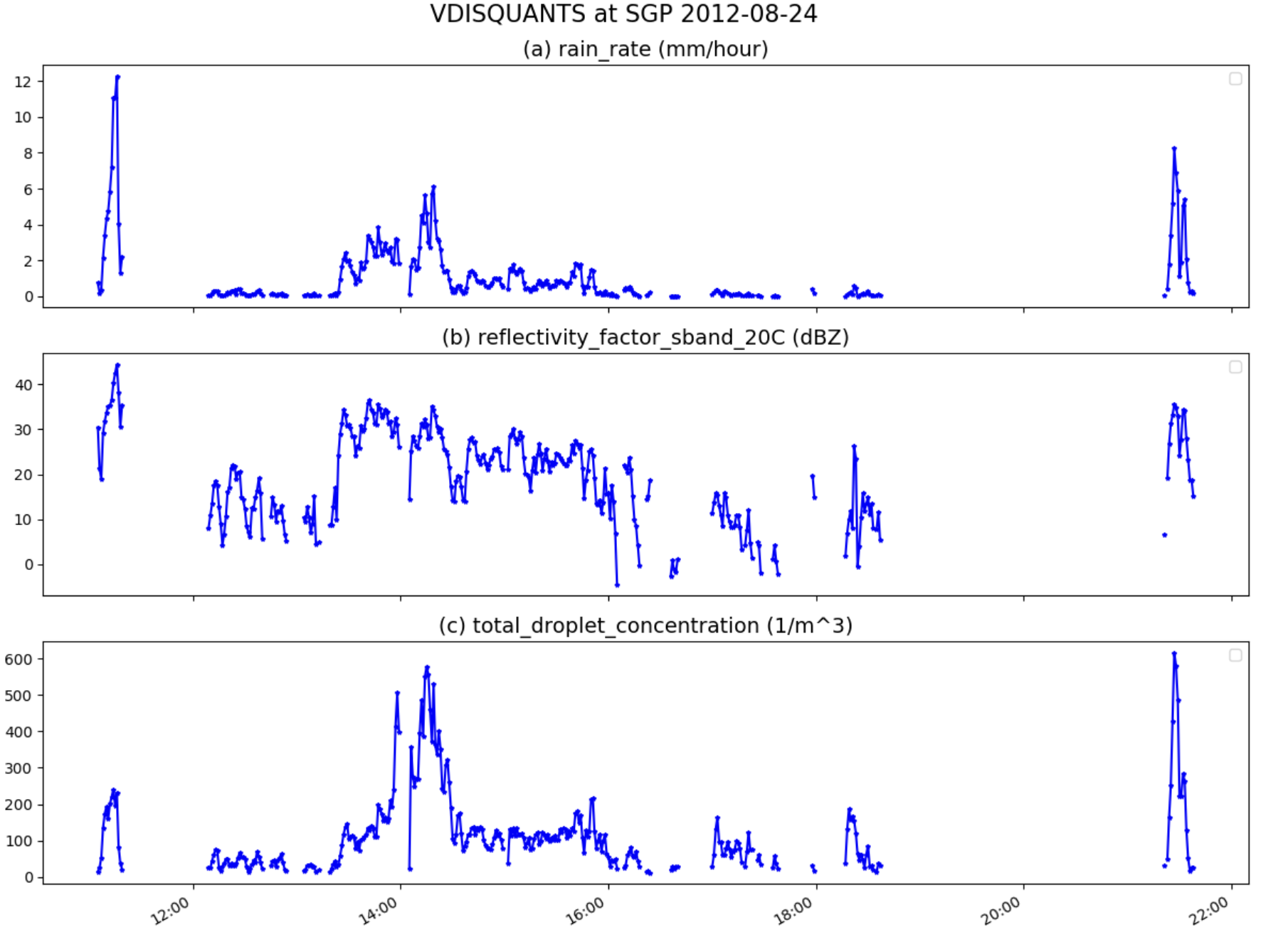Historical Video Disdrometer Quantities Processed for Southern Great Plains
Published: 28 August 2024

The Atmospheric Radiation Measurement (ARM) user facility recently released more than five years of historical data from the Video Disdrometer Quantities value-added product (VDISQUANTS VAP) for the Southern Great Plains Central Facility near Lamont, Oklahoma.
VDISQUANTS provides quality-controlled measurements of drop size distributions (DSDs), rain rates, and polarimetric radar quantities from ARM’s video disdrometer.
DSD measurements from disdrometers can be used to estimate key precipitation properties, including the rainfall rate, number concentration of drops, and mean raindrop size information. For these quantities to be useful for activities such as model evaluation or radar monitoring, disdrometer data sets require careful quality control and processing. VDISQUANTS uses standard methods adapted from the literature to filter spurious drops and extract important microphysical quantities of parameterized DSDs (e.g., gamma/exponential DSD assumptions and fitting).
In support of radar-based research interests and monitoring, this VAP also estimates radar-equivalent dual-polarization quantities (e.g., Reflectivity Factor Z, Differential Reflectivity ZDR). VDISQUANTS computes these quantities by using the T-matrix scattering technique and several wavelength, temperature, and drop shape assumptions.
The historical data are available in daily files from February 28, 2011, to September 30, 2016. Estimates of DSD properties are at 1-minute resolution.
Scientists can use the historical VDISQUANTS data now. More information about VDISQUANTS can be found on the VAP web page.
To ask questions, provide feedback, or report data problems, please contact VAP developer Aifang Zhou or ARM translator Dié Wang.
Access the VDISQUANTS data in the ARM Data Center. (To download the data, first create an ARM account.)
VDISQUANTS data can be referenced as doi:10.5439/1592683.
Keep up with the Atmospheric Observer
Updates on ARM news, events, and opportunities delivered to your inbox
ARM User Profile
ARM welcomes users from all institutions and nations. A free ARM user account is needed to access ARM data.


















